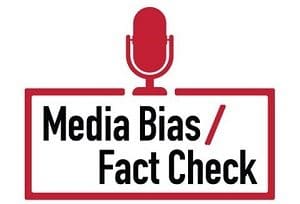LEAST BIASED
These sources have minimal bias and use very few loaded words (wording that attempts to influence an audience by appeals to emotion or stereotypes). The reporting is factual and usually sourced. These are the most credible media sources. See all Least Biased Sources.
- Overall, we rate The Hill Least Biased based on balanced editorial positions and news reporting that is low-biased. We also rate them Mostly Factual in reporting, rather than High, due to previous opinion columns promoting unproven claims.
Detailed Report
Bias Rating: LEAST BIASED
Factual Reporting: MOSTLY FACTUAL
Country: USA
Press Freedom Rank: MOSTLY FREE
Media Type: Newspaper
Traffic/Popularity: High Traffic
MBFC Credibility Rating: HIGH CREDIBILITY
History
The Hill is an American political journalism newspaper and website published in Washington, D.C., since 1994. The Hill focuses on politics, policy, business, and international relations. Their coverage includes the U.S. Congress, the presidency, and election campaigns. The current editor is Bob Cusack, who has been reporting on policy and politics in the nation’s capital since 1995.
Read our profile on the United States government and media.
Funded by / Ownership
In 2021, The Hill was purchased by Nexstar, which owns around 200 TV stations and media outlets nationwide. The founder, chairman, president, and CEO of Nexstar is Perry A. Sook. According to Open Secrets, Nexstar Media group gave more money to Republicans in the 2018 election cycle (45% to Democrats, 55% to Republicans). However, in 2020 they gave more to Democrats (55% Democrats, 45% to Republicans). The paper and website are funded through a subscription and advertising model.
Analysis / Bias
In review, The Hill covers both sides on the political spectrum and generally sources information properly; however, they sometimes rush stories and have to change them after the fact. The Hill rarely uses loaded words in their headlines and articles such as this: Trump says he won’t sign GOP’s compromise immigration bill. All news stories are sourced from either journalists or credible media sources.
The Hill features editorial commentaries that provide a reasonably balanced group of columnists that consists of the following:
- Brent Budowsky (Leans Left)
- Lanny Davis (Leans Left)
- John Feehery (Leans Right)
- Mark Mellman (Slightly Left)
- Katie Pavlich (Leans Right)
- Bill Press (Leans Left)
- David Webb (Leans Right)
The Hill also features other outside opinion contributors such as Newt Gingrich, among other prominent figures. The general overall tone of all op-eds is currently balanced after dominant right-leaning voice John Solomon left the paper in October 2019.
The Hill has faced criticism for the hiring of John Solomon. He is described as a strong supporter of President Trump and a conspiracy theorist, with his previous opinion columns under review for false content. Further, reports indicate that owner Jimmy Finkelstein “kept a watchful eye on the newspaper’s coverage to ensure it is not too critical of the President.”
News reporting is generally balanced and factual with a reasonably balanced Op-Ed page.
Failed Fact Checks
A factual search reveals The Hill has not failed any fact checks. However, they have rushed to publish breaking news that needed to be corrected or removed in the past. The Hill also published editorial commentary that has been labeled conspiratorial by other sources; however, this columnist is no longer with the paper.
Overall, we rate The Hill Least Biased based on balanced editorial positions and news reporting that is low-biased. We also rate them Mostly Factual in reporting, rather than High, due to previous opinion columns promoting unproven claims. (5/18/2016) Updated (D. Van Zandt 01/14/2022)
Source: https://thehill.com/
Last Updated on July 1, 2023 by Media Bias Fact Check
Do you appreciate our work? Please consider one of the following ways to sustain us.
or
Left vs. Right Bias: How we rate the bias of media sources


